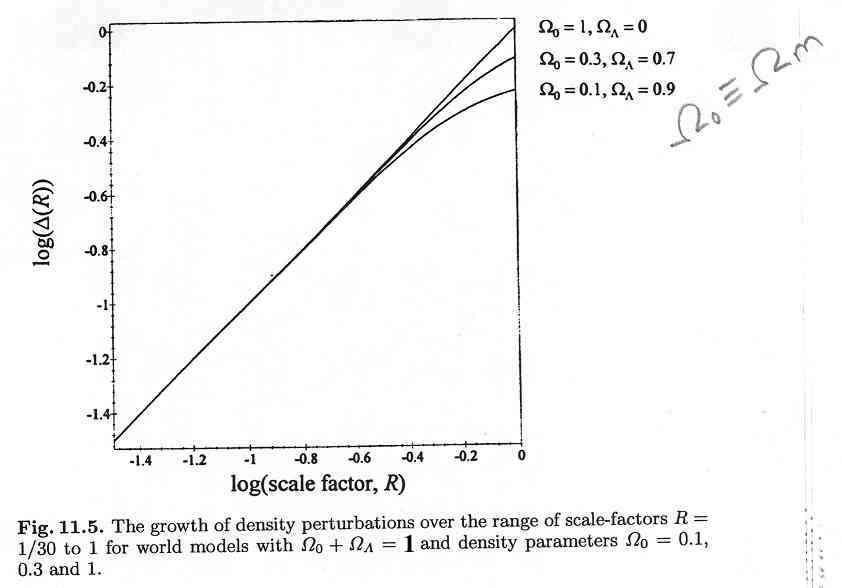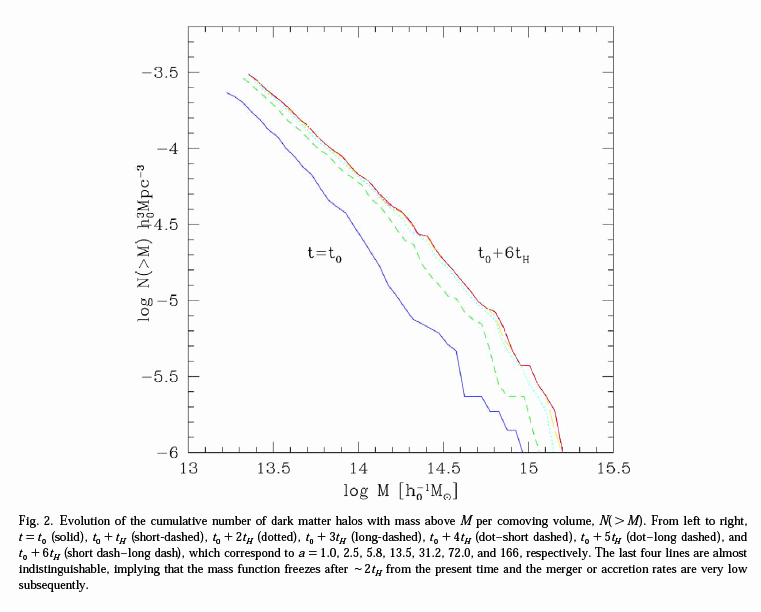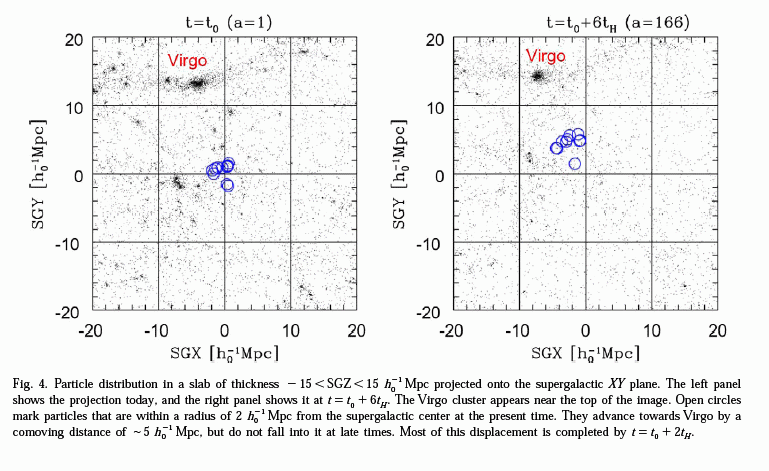Structure Formation and Expansion Dynamics
Remember our discussion of linear structure formation under varying cosmological models:
So we should expect structure formation to slow down and stop as the acceleration era continues. Since at late times, R(t) increases exponentially, on cosmological scales matter is separating faster than gravity can assemble it.
But note that gravitationally collapsed objects do not "disassemble" -- existing structure is frozen in, but can evolve internally.
Visible Horizon
(Reviewing notes here and here...)
What is the most distant object we can see? It is the most distant object where a photon could have made it to us in the age of the universe. The proper distance to the horizon is given by
For LCDM cosmology the integral is non-analytic, but can be done numerically. Here is the horizon distance as a function of time:
At z=0, the proper distance to the horizon is about 14.6 Gpc.
In the matter dominated era, the horizon distance increases faster than the scale factor. So more and more of the universe comes into view.
At late times in the Lambda era, the horizon distance increases exponentially, but so does R(t). So everything that will ever be visible is contained in a present proper distance of ~ 19 Gpc. Photons from parts of the universe more distant than this today will never reach us, and as time goes by, regions closer to us will be accelerated out of our horizon.
Putting it together. Simulation of structure formation at late time (from Nagamine and Loeb 2003):
Notes:
- Coordinate system is comoving coordinates, so structure does not appear to expand. Instead, the red circle shows a physical radius of 100h-1 Mpc (so ~ 140 Mpc). At late times this physical radius is so small in comoving coordinates that the circle cannot be seen.
- "a" is what we have called R.
- Blue circle at late times shows the horizon distance of 3.6h-1 Gpc (~ 5 Gpc)
- Structure is largely frozen in, does not change much from a=2.5 to a=166.
- Structure is expanding out of our horizon.
Structure has stopped growing after another ~ 2 Hubble times (~30 Gyr):
How big of a volume is virialized? Will we accrete into the Virgo Cluster?
So... no.






